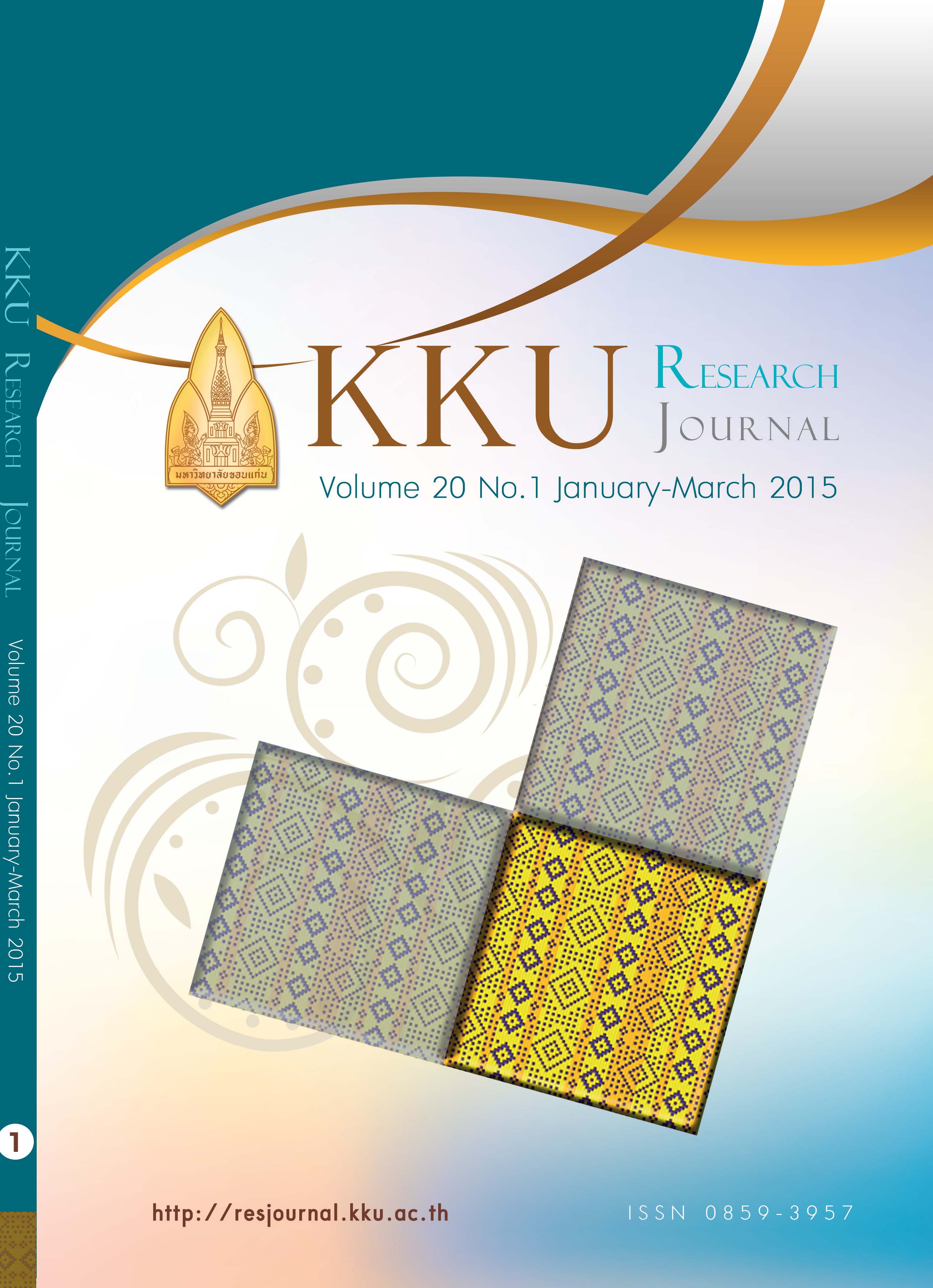Supervised self organizing maps for exploratory data analysis of running waters based on physicochemical parameters: a case study in Chiang Mai, Thailand
Main Article Content
Abstract
This report demonstrated the use of a supervised self organizing map (SOM) for exploratory analysis of running waters based on their chemical criteria. Water samples from 10 different sites, representing 4 different water types – streams, a river, an irrigation canal and a sewage canal – were collected from some areas in Chiang Mai, Thailand, during 8 month period from May to December and analyzed for 16 physicochemical parameters. The samples were categorised into 8 classes (the 8 months from May to December) and 10 classes (the 10 sampling sites). This information was incorporated into the modeling using a supervised SOM methodology. The results were visualized using supervised colour shading and a unified distance matrix (U-matrix). The supervised SOM improved the correlation among the samples within group. It was possible to reveal the water sample clusters, either when organized according to the sampling times or sites. Moreover, all of the variation could be used for the analysis, eliminating the need to choose the specific dimensions or the number of principal components (PCs).
Article Details
References
[2] Wold S, Esbensen K, Geladi P. Principal component analysis. Chemometr. Intell. Lab. 1987;2(1-3):37-52.
[3] Brereton RG. Chemometrics for pattern recognition. Chichester, UK: John Wiley & Sons; 2009.
[4] Kittiwachana S, Ferreira DLS, Fido LA, Thompson DR, Escott REA, Brereton RG. Self-organizing map quality control index. Anal. Chem. 2010;82[14]:5972-5982.
[5] Lloyd GR, Wongravee K, Silwood CJL, Grootveld M, Brereton RG. Self organising maps for variable selection: application to human saliva analysed by nuclear magnetic resonance spectroscopy to investigate the effect of an oral healthcare product. Chemometr. Intell. Lab.2009;[2]:149-161.
[6] Bae MJ, Park YS. Biological early warning system based on the responses of aquatic organisms to disturbances: a review. Sci. Total Environ.2014;466:635-649.
[7] Kittiwachana S, Wangkarn S, Grudpan K, Brereton RG. Prediction of liquid chromatographic retention behavior based on quantum chemical parameters using supervised self organizing maps. Talanta 2013;106:229-236.
[8] Napattalung M. Quality of running water in some areas of Chiang Mai based on chemical criteria [Thesis]. Chiang Mai: Chiang Mai University, 1997.
[9] Jackson JE. A user’s Guide to Principal Components. New York, US: John Wiley & Sons; 2003.
[10] Kohonen T. Self-Organizing Maps. New York, US: Springer; 2001.
[11] Arnonkijpanich B, Hasenfuss A, Hammer B. Local matrix adaptation in topographic neural maps. Neurocomputing 2011;74[4]:522-539.
[12] Lloyd GR, Brereton RG, Duncan JC. Self organising maps for distinguishing polymer groups using thermal response curves obtained by dynamic mechanical analysis. Analyst 2008;133(8):1046-1059.
[13] Maesschalck RD, Jouan-Rimbaud D, Massart DL. The Mahalanobis distance. Chemometr. Intell. Lab. 2000;50(1):1-18.
[14 Kittiwachana S, Ferreira DLS, Fido LA, Thompson DR, Escott REA, Brereton RG. Dynamic analysis of on-line high performance liquid chromatography for multivariate statistical process control. J. Chromatog. A2008;1213[2]:130-144.
[15] Lloyd GR, Brereton RG, Faria R, Duncan JC. Learning vector quantization for multiclass classification: application to characterization of plastics. J. Chem. Inf. Model. 2007;47[4]:1553-1563.
[16] Sridang P, Danteravanich S, Thananuphaphphaisarn S, Durand C. Assessment of water pollution in Khun Thale swamp. KKU Res. J. 2008;13[9]:1037:1048.

